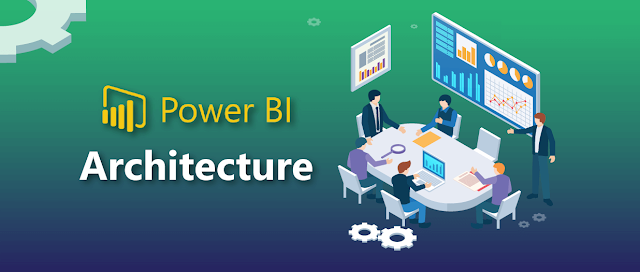BlockChain Tools
In the simplest of terms, a blockchain is a time-stamped series of immutable data recording that is managed by a cluster of computers not owned by any single entity. -- of these data bricks (i.e. bricks) are encrypted using cryptographic principles (i.e. chain) and bound to each other.

Head back back Tool
Geth is an Ethereum node
implemented in the programming language Go. To put it simply, Geth is a program
that functions as a blockchain node to Ethereum. Via Geth. a person can do the
following:
●
Mine ether tokens
●
Tokens to switch
between addresses
●
Build and execute
smart contracts on Ethereum Virtual Machine
●
Discover the past of
blocks
You should go access Geth in
here. Geth is supported by Windows, Linux, Mac and. There are two types of
supported systems, Binary and Scripted.
Upon starting Geth, you'll have
the option to link to:
●
Existing blockchain
live
●
Create your own
blockchain, depending on the settings given
But, if you don't set any default
values, Geth can connect to Ethereum mainnet automatically. Geth also acts as a
console for performing different tasks and inputting other commands. Keep one
thing in mind though, it will immediately download the entire Ethereum
blockchain on running Geth, which can take a long time (even days). Using an
external hard drive to store the data may be sensible.
Mist
You must now have a location
where you can actually store your Ether tokens and execute your smart contracts
before you continue using Ethereum. Mist, is the official Ethereum wallet
created by the people themselves responsible for Ethereum. Although using Mist
makes much sense, particularly for smart contract deployment, one thing you have
to keep in mind. It is a complete node wallet, meaning you'll have to download
the whole blockchain Ethereum, which is > 1 TB.
Mist is used on all Windows
(32-bit and 64-bit), Mac, and Linux (32-bit and 64-bit).
Once you have finished
downloading Mist, you will be told to wait a bit, because the program
synchronizes you with the blockchain of Ethereum. When the node is completely
synchronized, the test blockchain or the main blockchain will give you the
option to run. If you just want to check Ethereum then we suggest using
blockchain software.
It's this time around that you'll
be asked to choose a password. Couple of things you need to keep in mind here.
Second, you will never be able to
change your password ever again once you have set it. So from the get go you
have to set a really strong password and you never have to forget your
password. Next, every time you want to submit Ether, you'll need to enter your
password as final confirmation.
Solc
In terms of developing on
Ethereum, solidity is pretty much your bread and butter. Solidity is a
purposely slimmed down, loosely-typed language with a syntax somewhat close to
ECMAScript (Javascript), which is used to build smart contracts on the Ethereum
blockchain. It, however, is required to convert the solidity script to a format
that the Ethereum Virtual Machine can easily read. This is where
"solc" or compiler solidity comes in.
There are two Kings of compilers
of Solidity:
Solc, that was written in C++
Solc-js, using Emscripten to
cross-compile JavaScript from the C++ source code to the solc.
Although they are technically
pretty much built from the same source code, in practice they tend to come up
with somewhat different results. We have different interfaces on the command
line, too. That said, the solc-js is a little slower than solc.
$Solc
time —optimize —bin -o. Test1.a.
Warning: This is a pre-release
version of the compiler, please don't use it in development.
Just
0m0.075s
Benutzer
0m0.007
More
sys 0m0.009s
$Time
solcjs —optimize Test1.sol —bin
True
times 0m3.950s
Benutzer
0m3.524s
Support
sys 0m0.337s
A large number of native Ethereum
nodes include a solc implementation, but it is also bundled as a standalone
module for offline compilation. And you can choose to use
web3.eth.compile.solidity) (to compile your Solidity files using your node, or
you can start using solc.compile) (which doesn't depend on any external node.
A JavaScript built-in solidity
compiler allows for some interesting applications. One such application happens
to be Remix, our next device.
Remix
Remix is a fantastic compiler we
use to create small contracts. If you want to learn to be solid, then this is
the best way to do it. Just go to their website and you should be greeted.
The default Remix
computer
To the left you see a screen that
allows you to write code. The right side allows you to deploy the code on the
blockchain, and allows you to communicate with the functions you've written.
Written in Javascript, Remix
supports both client uses and local usages. Remix also supports checking,
debugging, and smart contract implementation and much more.
The code analyser from Remix to
make sure developers write their best code. Remix connects via Metamask to the
Ethereum blockchain (more on that in a bit).
Test net blockchain
There are some things you will
need to remember when writing programs for the Ethereum Virtual Machine (EVM):
Next, you have to pay for the
launch and the use of gas. Fuel consumption prices are a huge issue in
Ethereum. So want to pay so much money for a product that you haven't even
checked yet?
Second, an untested program could
contain a flaw in its code that could cause Ethereum blockchain havoc. Moreover
note that the blockchain of Ethereum is eternal, so anything that happens to it
is real and can not be reversed.
This is why you might want to test
the dapp in a testnet before using the mainnet to actually deploy it. Testnets
are almost identical copies of the Ethereum blockchain to the Mainnet in every
way except because their Ether is useless (and, of course, the software that
was deployed on these testnets).
There are three test-net types:
●
Public research
●
Private Research
●
GanacheCLI (that is,
Testrpc)
Public research
Public test nets are available to
anyone who is connected to the internet. Using wallet interfaces like My Ether
Wallet or Meta Mask, anyone can connect to these. Ropsten, Rinkeby, and Kovan
are the public test-nets in open.
Private Research
You also have the option of
getting your own personal blockchain i.e. a private test network instead of a
public blockchain. So how exactly are you going to build your personal
blockchain?
A genesis file that you create
will use a tool, quite like Geth, that will just build a new chain for you.
Then this chain is examined and interacted with through software such as Mist,
MetaMask, MyEtherWallet etc.
So what would use test
nets for private use?
Blockchain teams working on
sensitive projects and having to model confirmations of mining and transactions
without exposing themselves to the risks of attacks and hacks can use these
testnets.
They 're free to create these
private testnets. The only costs which are needed are:
●
A small fraction of
CPU power
●
Disk space on the
developer's PC
As well, once a private testnet
has evolved enough, the developers involved can open the network to the online
public.
Ganache CLI
Ganache CLI (formerly Testrpc), a
NodeJS package, is a fast and customisable emulator of blockchain. This
simulates the Ethereum network on a single computer and allows you to make
calls to the blockchain without running a real Ethereum node in any of the trouble.
Some of the things you can do in
a GanacheCLI include:
●
Mining transactions
immediately
●
0 Transaction Charges
With a fixed amount of Ether, all
accounts within the testnet can be recycled, reset and instantiated
Gas prices and the speed of
mining can be changed and modified as and when you wish
An incredibly user friendly
Interface that will give you an overview of your test chain events.
Conclusion
I hope you reach to a conclusion
about tools in BlockChain. You can learn more through Blockchainonline training Hyderabad.

Comments
Post a Comment